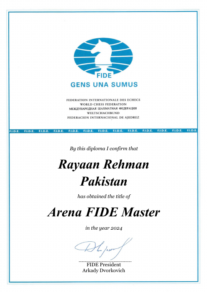Punjab Battles Smog with Multi-Pronged Approach, Including Potential India Collaboration

Lahore, the historic capital of Punjab province in Pakistan, grapples with a significant environmental challenge – smog. This thick layer of air pollution, a combination of fog and smoke, blankets the city during winter months, posing severe health risks for residents. The provincial government, determined to tackle this issue, has recently announced a multi-pronged approach, which includes a potential collaboration with neighboring India.
Crossing Borders for Cleaner Air
The news of a possible cross-border agreement between Punjab and India to combat smog has sparked both interest and curiosity. While the specifics of the agreement haven’t been finalized, the idea signifies a willingness to explore joint solutions. Such collaboration could involve:
- Sharing best practices: Both countries have experiences and policies to address air pollution. Sharing knowledge on effective measures, like pollution control technologies or emissions regulations, can benefit both sides.
- Joint monitoring: Air pollution often transcends borders. By establishing a collaborative monitoring system, Punjab and India can gain a clearer understanding of regional pollution patterns and sources. This can lead to more targeted control measures.
- Cross-border pollution control: Industrial facilities located near the border can significantly impact air quality on both sides. A joint agreement could ensure stricter regulations and enforcement mechanisms for these facilities.
While the potential benefits are evident, there are also challenges to consider. Political tensions between the two nations and logistical hurdles in implementing a cross-border agreement can’t be ignored. However, the urgency of addressing the smog crisis necessitates exploring avenues for cooperation.
Punjab’s Domestic Initiatives
The Punjab government is not solely relying on international collaboration. It has announced a series of domestic initiatives aimed at curbing air pollution within the province. Here’s a closer look at these measures:
Scrutinizing Polluting Factories
Industrial facilities are a major source of air pollution. The government plans to increase inspections and enforce stricter emission standards for factories. This can significantly reduce industrial pollutants like particulate matter and harmful gases.
Digitizing Brick Kiln Industry
Traditional brick kilns are notorious for contributing to smog. The government’s plan to digitize this industry aims to introduce cleaner technologies and improve fuel efficiency. This shift can significantly reduce emissions from brick production.
Emission Control Systems in Industrial Zones
The government is mandating the installation of emission control systems in designated industrial zones. These systems capture and filter out pollutants before they are released into the atmosphere. This can lead to a substantial reduction in overall air pollution levels.
Promoting Mechanised Crop Harvesting
The traditional practice of crop burning after harvest is a significant contributor to smog. The government is encouraging farmers to adopt mechanized harvesting techniques. This eliminates the need for burning and reduces air pollution caused by agricultural practices.
Public Awareness Campaign
Spreading awareness about the causes and health impacts of smog is crucial for long-term solutions. The government’s plan to develop a mobile app for this purpose is a positive step. This app can inform citizens about air quality levels, preventive measures, and government initiatives.
Potential Benefits and Challenges
The success of these initiatives hinges on effective implementation and long-term commitment. If implemented successfully, these measures have the potential to significantly improve air quality in Punjab. Here’s a glimpse into the potential benefits:
- Improved Public Health: Smog can cause respiratory problems, heart disease, and other health complications. By reducing air pollution, these initiatives can lead to a healthier population.
- Environmental Sustainability: Combating smog contributes to a more sustainable environment. Cleaner air benefits not just human health but also the ecological balance of the region.
- Economic Advantages: Improved air quality can attract tourism and investment, leading to economic growth for the province.
However, challenges also need to be addressed:
- Enforcement: Effective implementation of stricter regulations and pollution control measures is crucial. A robust enforcement mechanism is necessary to ensure compliance from industries and individuals.
- Funding: The implementation of these initiatives requires significant financial resources. The government will need to secure funding for new technologies, infrastructure upgrades, and public awareness campaigns.
- Long-Term Commitment: Combating smog is a long-term battle. Sustained efforts and unwavering commitment from the government and the public are essential for lasting change.
Conclusion: A Collective Effort for Cleaner Air
The Punjab government’s multi-pronged approach, including the potential collaboration with India, demonstrates a proactive stance on tackling smog. The success of these initiatives relies on effective implementation, securing funding, and fostering long-term commitment. Public participation is also crucial. By adopting practices that reduce air pollution and supporting government initiatives, citizens can play a vital role in creating a cleaner and healthier environment for themselves and future generations. The battle against smog requires a collective effort, and with a combination of innovative solutions and unwavering commitment, Punjab can breathe easier.



